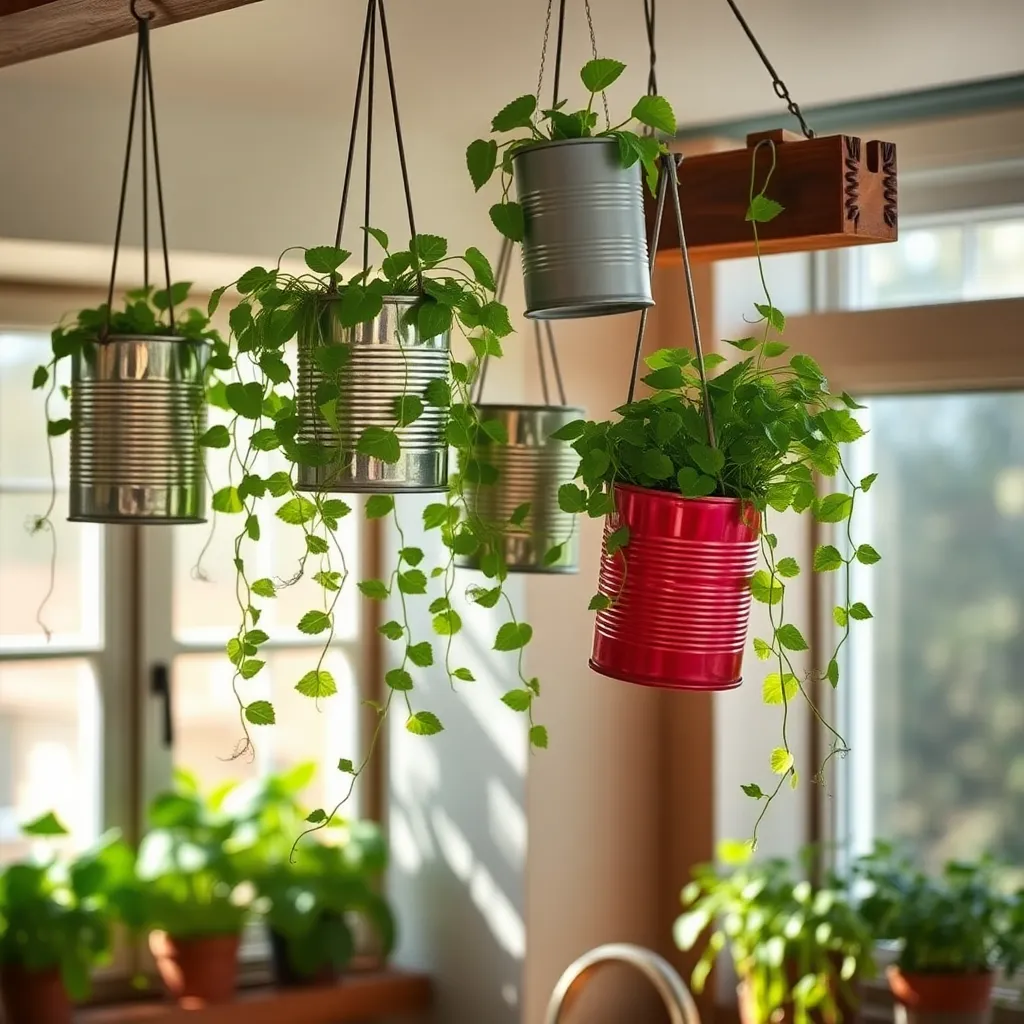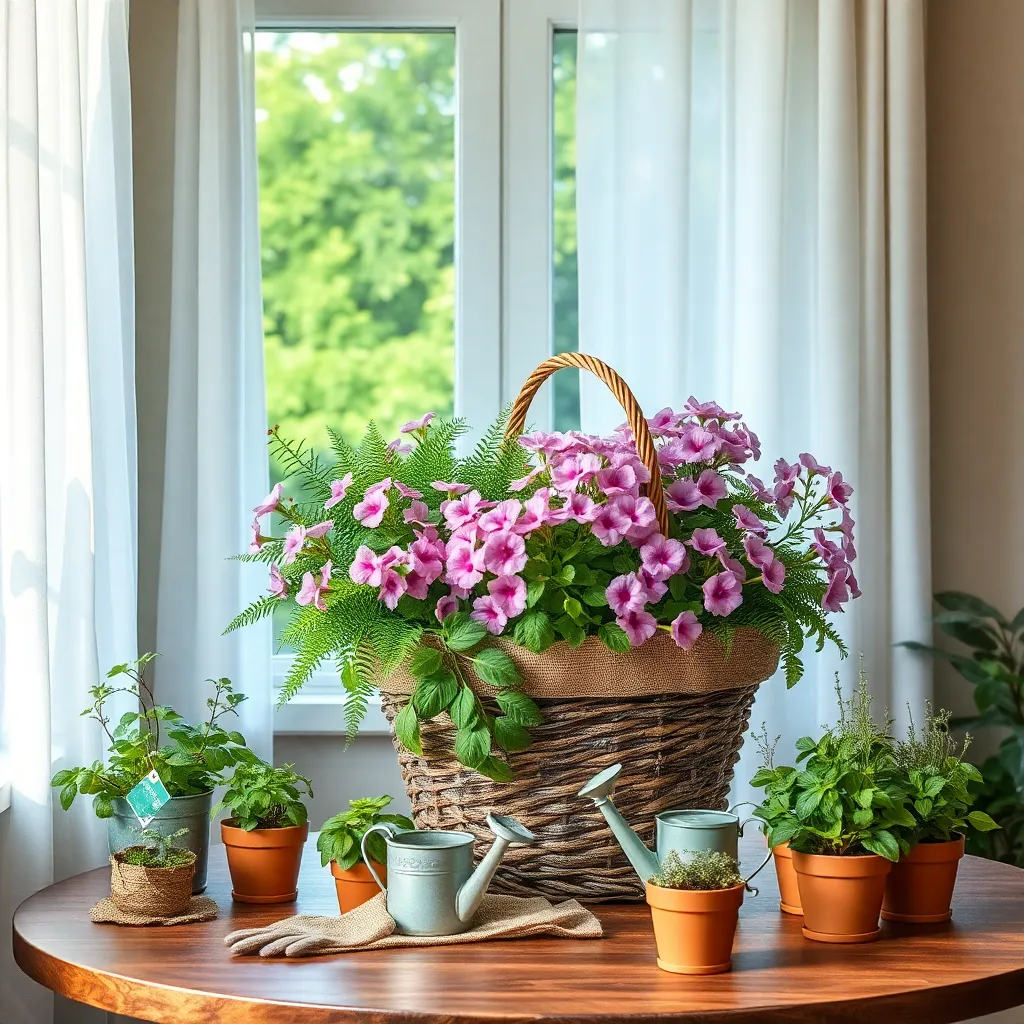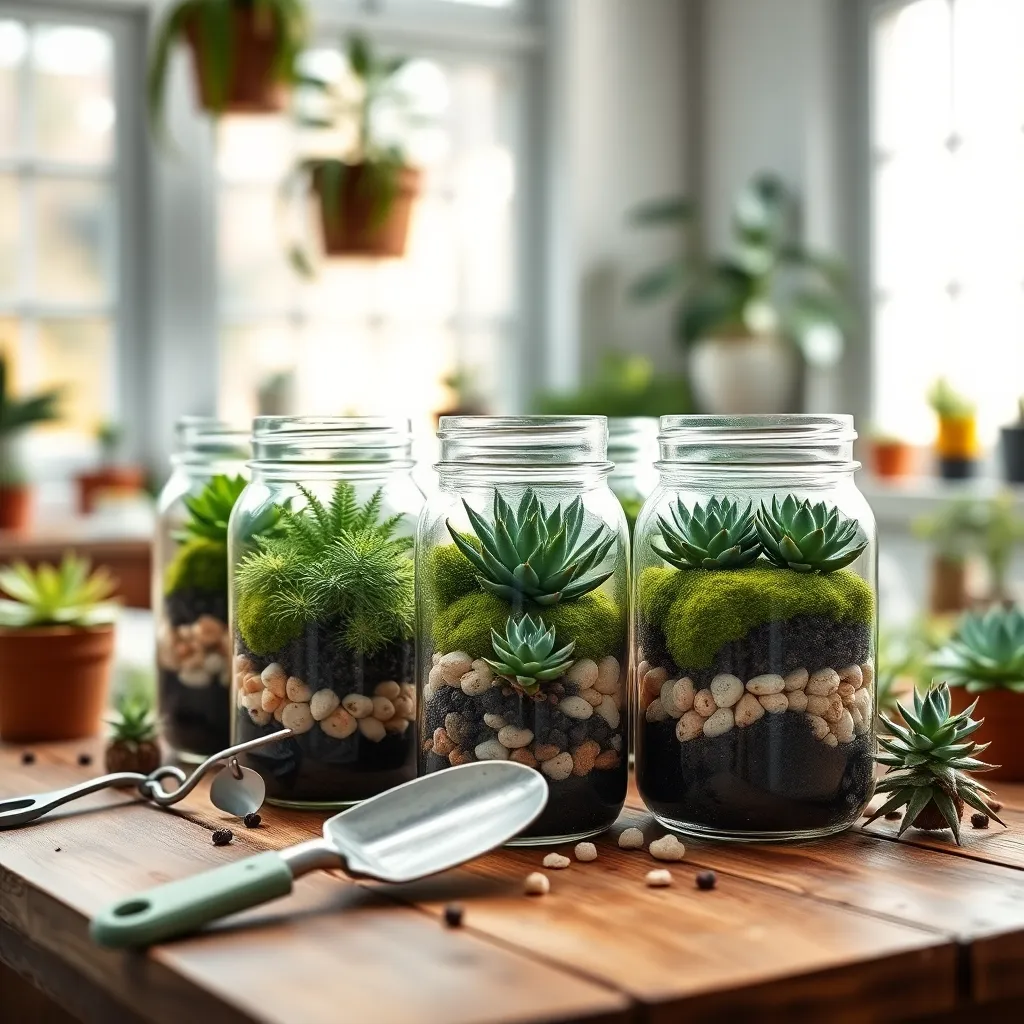Welcome to “Simple DIY Indoor Planter Ideas,” your gateway to transforming any indoor space into a lush, vibrant haven. Whether you’re a seasoned gardener or just starting your journey with houseplants, this guide is designed to inspire and equip you with creative planter projects that are as rewarding as they are easy to achieve.
Indoor gardening not only brings life and color into your home but also offers a sense of accomplishment and relaxation. This collection of planter ideas is valuable because it caters to all skill levels, ensuring that everyone can experience the joy of successful plant care and design.
By diving into these simple DIY projects, you’ll gain practical skills and confidence to tackle even more ambitious gardening endeavors in the future. So, grab your tools and get ready to unleash your inner green thumb—these projects promise to enrich your living space while nurturing your love for plants.
Repurpose Jars as Herb Planters

Repurposing jars as herb planters is a creative and sustainable way to grow herbs indoors. Begin by selecting jars with wide mouths to allow easy planting and good air circulation.
For optimal growth, ensure your jars have drainage; you can create this by adding a layer of small pebbles at the bottom. This helps to prevent waterlogging, which is crucial since herbs generally prefer well-drained soil.
Choose a high-quality potting mix designed for herbs, as it provides the right balance of nutrients and drainage. If you’re a beginner, start with easy-to-grow herbs like basil, parsley, or mint, which thrive in indoor conditions.
Place your jars in a location that receives at least six hours of sunlight daily, such as a south-facing windowsill. Regularly check the moisture level by touching the soil; water only when the top inch feels dry to avoid overwatering.
Advanced gardeners can experiment with adding slow-release organic fertilizers to the soil mix to enhance growth. Additionally, rotating the jars weekly ensures even sunlight exposure, promoting uniform plant development.
Transform Cans into Hanging Pots

Repurposing cans into hanging pots is an excellent way to recycle and add charm to your indoor garden. Begin by thoroughly cleaning the cans to remove any residue, then use a hammer and nail to create drainage holes in the bottom.
It’s essential to choose the right type of plants for your new hanging pots. Succulents and small herbs are ideal choices because they thrive in the compact environment of a can.
Fill the cans with a lightweight potting mix that supports good drainage, such as a cactus or succulent mix. This ensures that excess water doesn’t accumulate, which can lead to root rot.
Securely attach twine or wire around the can to hang it, ensuring the knot is tight enough to hold the weight of the plant and soil. Hang your new planters in a spot with ample light, as most plants suitable for these conditions require bright, indirect sunlight.
Craft Shelves with Wooden Crates

Wooden crates can be easily transformed into stylish planter shelves, offering a rustic charm to your indoor garden. Begin by selecting sturdy crates, ideally made of untreated wood, to ensure they can support the weight of both soil and plants.
Arrange the crates on their sides and stack them to create a shelving unit that suits your space. Secure them together with screws for stability, ensuring that each crate can hold multiple small pots or one larger pot securely.
For those new to gardening, start by filling your planters with a general-purpose potting mix, which provides a balance of nutrients suitable for most indoor plants. More experienced gardeners may want to experiment with creating custom soil mixes to match the specific needs of their chosen plants.
Consider the light requirements of your plants when positioning your crate shelves. Place them near a window with indirect sunlight, as too much direct sun can scorch leaves, whereas insufficient light will inhibit growth.
Line Baskets for Rustic Displays

For a charming and rustic indoor display, consider lining baskets with natural materials. Using coco coir or sphagnum moss as liners can help retain moisture while allowing for adequate drainage.
When selecting baskets, opt for those with a sturdy framework to support plant weight. Ensure the baskets have a natural finish to enhance the rustic appeal and complement the greenery.
Begin with well-draining potting soil, which is essential for healthy plant growth in lined baskets. A mix containing peat moss, perlite, and compost works well for most indoor plants.
Watering needs vary by plant type, but generally, baskets dry out faster than traditional pots. Check moisture levels frequently, aiming to keep soil consistently moist but not waterlogged.
Beginners might want to start with resilient plants like pothos or ferns, which thrive in various light conditions. Advanced gardeners can experiment with succulents, provided they adjust the soil and watering routine accordingly.
To elevate the design, consider adding trailing plants like ivy or string of pearls for added visual interest. These cascading plants soften the basket’s edges, enhancing the overall rustic display.
Utilize Mason Jars for Terrariums

Mason jars are a fantastic option for creating charming terrariums that bring a touch of greenery indoors. These versatile containers are perfect for small spaces and allow you to observe the growth of your plants through the clear glass.
Begin by adding a layer of small pebbles at the bottom of your mason jar to ensure proper drainage. This step is crucial to prevent water from stagnating, which can lead to root rot in your plants.
Next, add a layer of activated charcoal to keep your terrarium fresh and odor-free. This is particularly important in closed terrariums, where air circulation is limited and moisture needs to be managed carefully.
Choose small plants such as mosses, succulents, or air plants that thrive in the humid environment of a terrarium. Make sure to position them carefully with enough space to grow, keeping in mind their light and moisture needs.
Water sparingly, as mason jars have limited drainage and can easily become waterlogged. For succulents, a light misting every two weeks is often sufficient, while mosses may need more frequent moisture.
Place your mason jar terrarium in a spot with indirect light, as direct sunlight can overheat the glass and damage your plants. If you’re using succulents, ensure they receive bright, indirect light to maintain their vibrant colors and health.
Conclusion: Growing Success with These Plants
In exploring the versatility of DIY indoor planters, we’ve uncovered five key relationship concepts that parallel the nurturing of both plants and partnerships. First, communication is the soil of any relationship; just as plants thrive with the right environment, so do relationships with open dialogue. Second, the importance of patience shows us that growth takes time, whether it’s nurturing a plant or deepening a bond. Third, creativity fuels connection, reminding us that a little innovation can breathe new life into our interactions. Fourth, adaptability is essential, as both plants and relationships require adjustments to flourish in changing circumstances. Lastly, consistency acts as the sunlight in our relational garden, where regular, small efforts lead to lasting growth.
As a next step, choose one planter idea to create together with your partner, using it as an opportunity to discuss these concepts and how they relate to your relationship. Save or bookmark this article now to revisit these insights and ideas whenever you need a gentle reminder of how to nurture your partnership.
Remember, just as a well-tended plant blossoms over time, so too will your relationship grow stronger with care and commitment. Here’s to a flourishing future filled with love and understanding!
